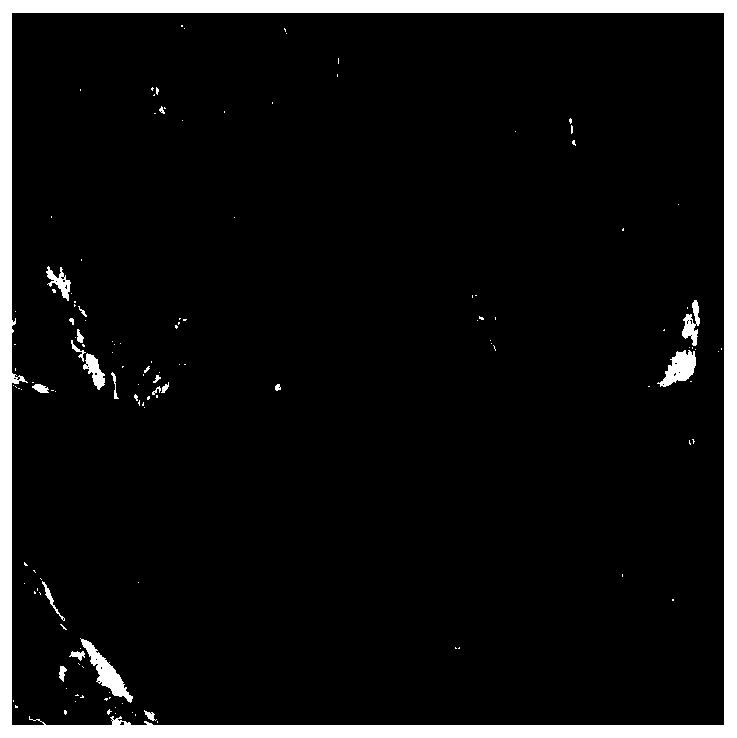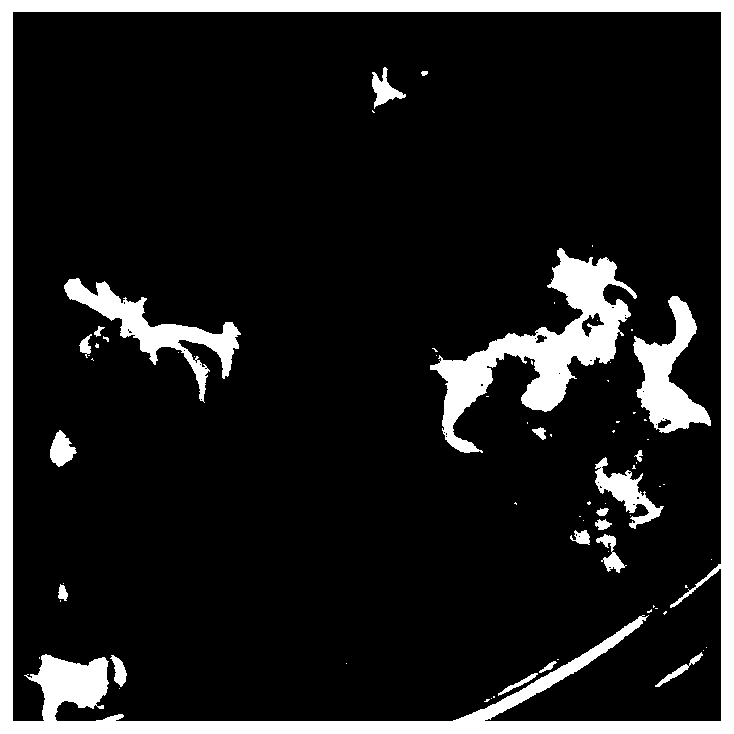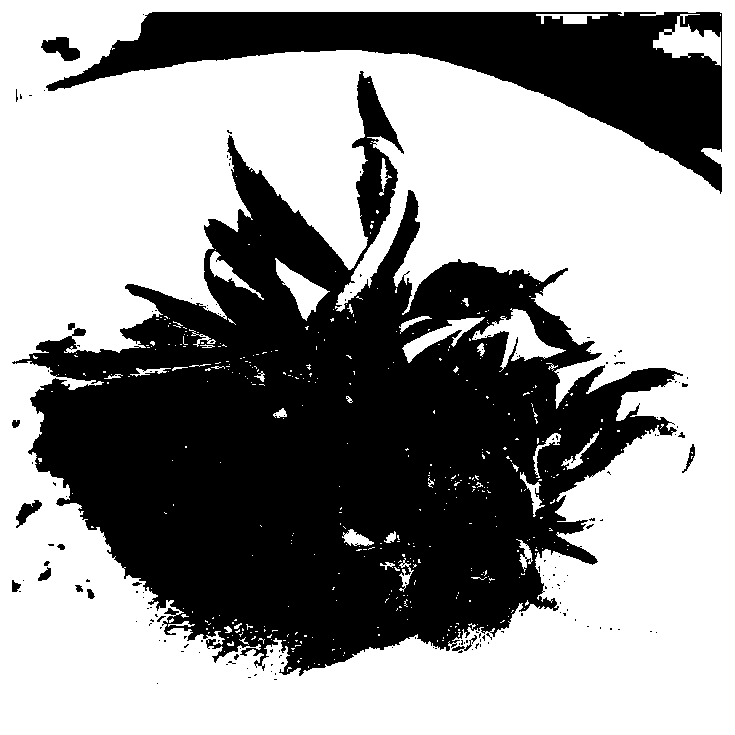A method of in vitro regeneration using the leaves of Hexa officinalis
An in vitro regeneration and hexagram technology, applied in the field of in vitro regeneration using hexagram leaves, can solve the problems of difficult seedling production, low multiplication coefficient, low reproduction coefficient, etc., and prevent callus formation , increase the multiplication coefficient, the effect of increasing the multiplication coefficient
- Summary
- Abstract
- Description
- Claims
- Application Information
AI Technical Summary
Problems solved by technology
Method used
Image
Examples
Embodiment 1
[0046] Embodiment 1 A method for in vitro regeneration of leaves of the species "MARDI GRAS", the cultivation steps are as follows:
[0047] 1) Selection of explants: The explants are from the leaves of the "MARDI GRAS" variety planted in the nursery of Fengpu District, Shanghai Academy of Agricultural Sciences.
[0048] 2) Disinfection of explants: take the leaves as explants, clean them with a soft brush dipped in detergent, rinse them with running water for 1-2 hours, and disinfect them with 70% alcohol for 30 seconds on an ultra-clean bench , 0.1% HgCl 2 Disinfect for 10 minutes, rinse with sterile water for 5 times, and set aside.
[0049] 3) Adventitious bud induction: cut off the leaf tips and both sides of the leaves after disinfection, and cut them into 0.5×0.5cm leaf squares, see figure 1 , inoculate the leaves back down in adventitious bud induction medium, and culture in the dark at 25°C for 30 days to induce adventitious buds, see figure 2 , each leaf block can ...
Embodiment 2
[0057] Embodiment 2 A method for the in vitro regeneration of leaves of the species "TWIST OF LIME" of Hexa japonica, the cultivation steps are as follows:
[0058] 1) Selection of explants: The explants come from the leaves of the "TWIST OF LIME" variety plant of the "Twist of Lime" plant planted in the nursery of Fengpu Park, Shanghai Academy of Agricultural Sciences.
[0059] 2) Disinfection of explants: Take the leaves as explants, clean them with a soft brush dipped in detergent, rinse them under running water for 1 to 2 hours, and disinfect them with 70% alcohol for 60 seconds on an ultra-clean bench , 0.2% HgCl 2 Disinfect for 6 minutes, rinse with sterile water 5 times at the end, and set aside.
[0060] 3) Adventitious bud induction: cut off the leaf tip and both sides of the sterilized leaves, cut them into 0.5×0.5 cm leaf squares, inoculate the leaves back down in the adventitious bud induction medium, and culture them in the dark at 25°C for 40 Adventitious buds ...
Embodiment 3~4 and comparative example
[0077] In Examples 3 and 4, except that the formulations of the rooting medium are different, all other cultivation methods refer to Example 2 of the present invention, and comparative examples 1-2 are set up, and the formulations of the medium and the comparison results are shown in Table 3.
[0078] table 3
[0079]
[0080] As can be seen from Table 3, the auxin concentration is an important factor affecting the rooting of A. grandiflora, without adding any auxin medium (comparative example 1) or when the auxin concentration is low (comparative example 2), the The rooting rate is low and it is difficult to meet the production demand.
[0081] In the present invention, two kinds of auxins IBA and NAA are used together, which can effectively improve the rooting rate of A. daflora. When the concentration of the auxin continues to increase, the rooting rate does not increase significantly. Therefore, the proper concentration ratio of IBA and NAA can maximize the rooting rat...
PUM
 Login to View More
Login to View More Abstract
Description
Claims
Application Information
 Login to View More
Login to View More - R&D
- Intellectual Property
- Life Sciences
- Materials
- Tech Scout
- Unparalleled Data Quality
- Higher Quality Content
- 60% Fewer Hallucinations
Browse by: Latest US Patents, China's latest patents, Technical Efficacy Thesaurus, Application Domain, Technology Topic, Popular Technical Reports.
© 2025 PatSnap. All rights reserved.Legal|Privacy policy|Modern Slavery Act Transparency Statement|Sitemap|About US| Contact US: help@patsnap.com



